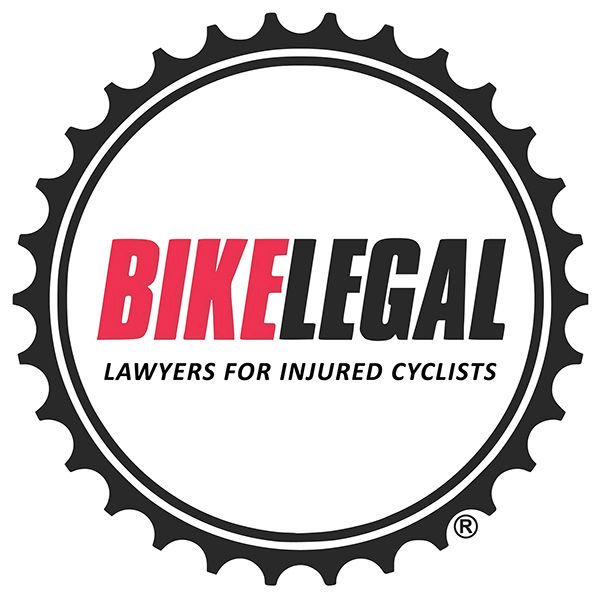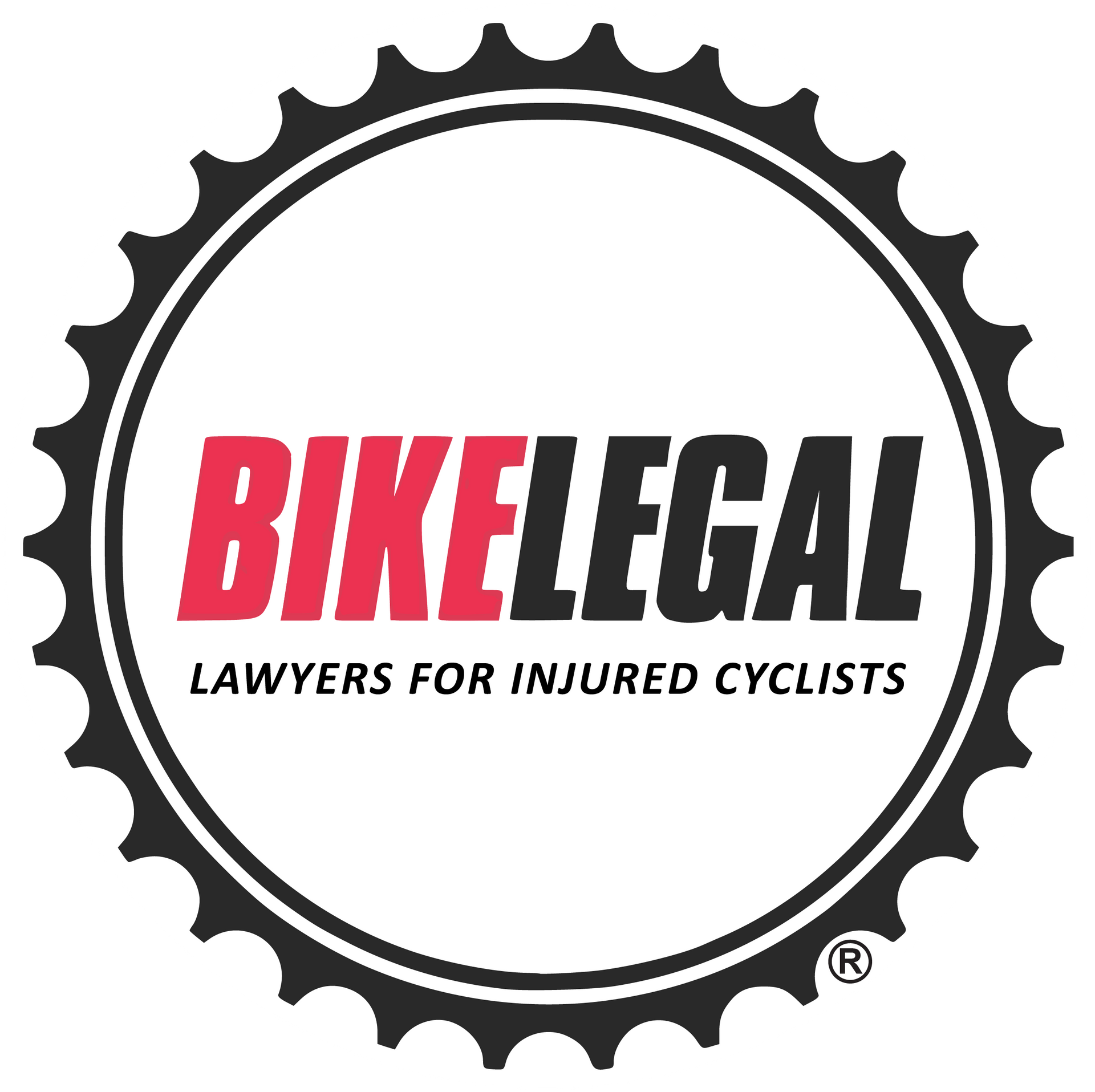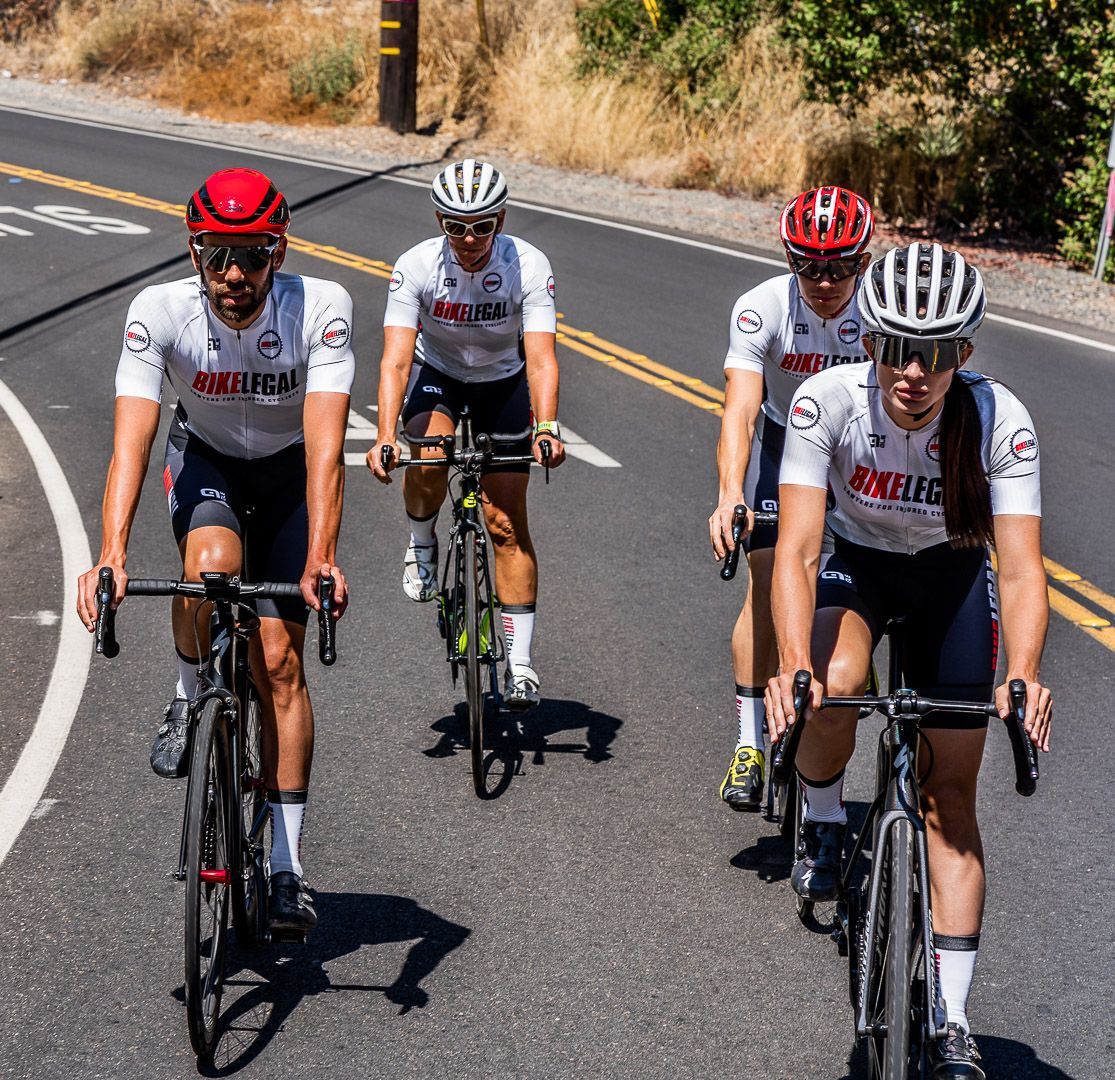Nevada Bicycle Laws: What Cyclists Need to Know in 2025
Follow us on
social media!
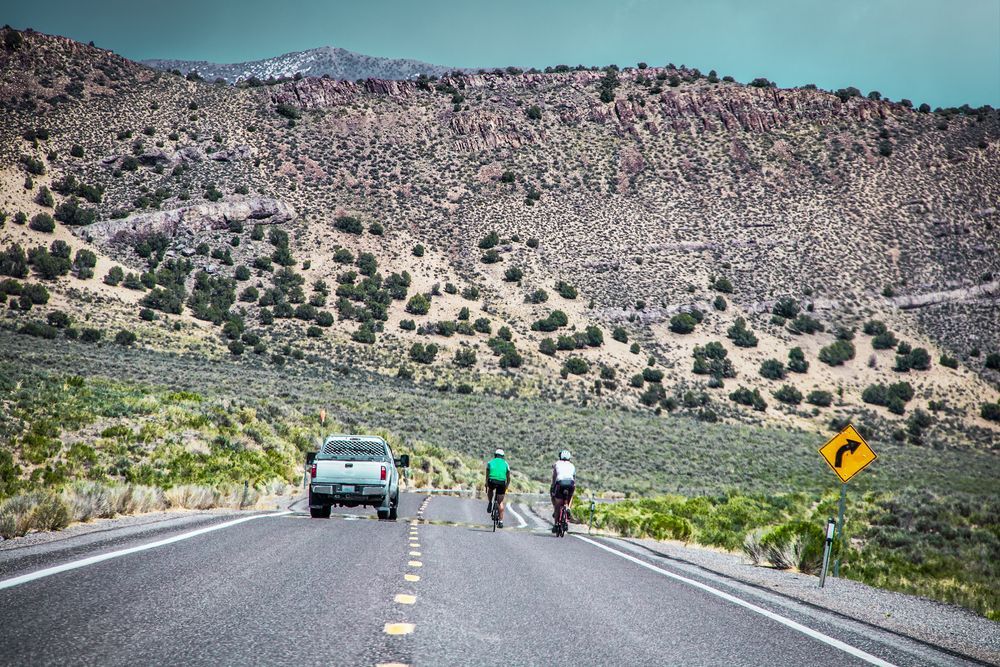
Understanding Nevada bicycle laws is essential for anyone who rides on public roads—whether for commuting, recreation, or sport. This guide offers a comprehensive overview of the state’s current bicycle regulations, equipment requirements, and road-sharing responsibilities.
According to the Nevada Department of Transportation’s 2022 State Fatality Report, there were 15 bicycle-related fatalities statewide, with a staggering 13 occurring in Clark County, home to Las Vegas. These numbers highlight the urgent need for improved cyclist awareness, driver education, and stronger enforcement of existing laws. See our analysis of 2022 cyclist death statistics for more insights.
In this article, you’ll find key information on:
- The essential Nevada bicycle laws every cyclist should know
- Equipment and safety gear requirements
- Where cyclists can and cannot ride
- E-bike classifications and regulations
- Legal consequences and crash liability
Nevada Bicycle Laws
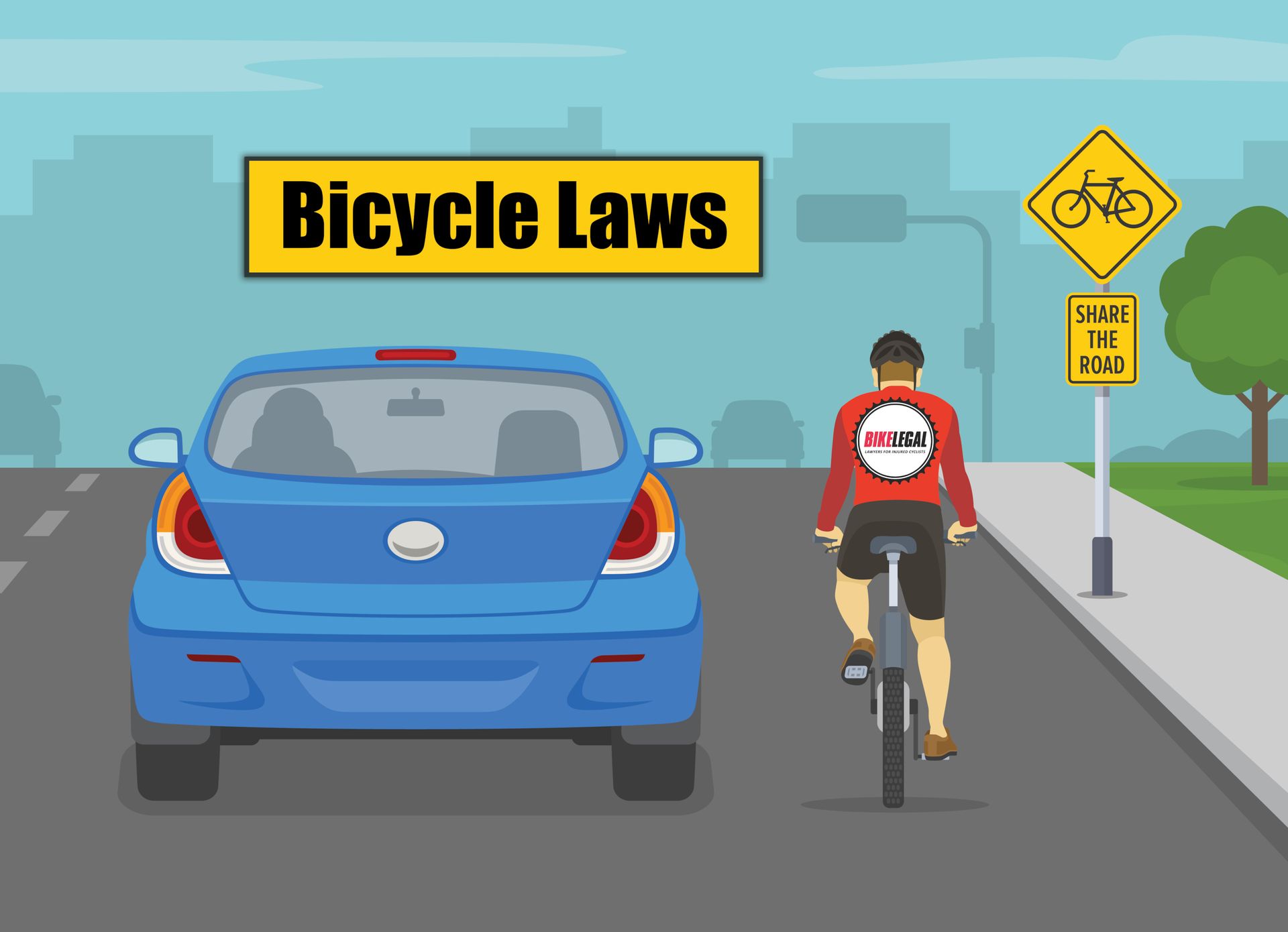
Bicycles Are Treated as Vehicles in Nevada
Under NRS 484B.763, people riding bicycles, electric bicycles, or electric scooters on public roadways are granted the same rights and responsibilities as drivers of motor vehicles unless a specific exception is outlined in the law. That means cyclists must obey traffic lights, stop signs, right-of-way rules, and other traffic regulations.
Parents and guardians are also held responsible for ensuring that children riding bicycles follow these laws (NRS 484B.760).
Where Cyclists Can—and Can’t—Ride in Nevada
Nevada's traffic laws are designed to protect bicycle riders from bike accidents and promote harmony between all road users. The following points highlight Nevada’s rules of the road that cyclists and motorists alike should be aware of:
Bike lane positioning:
According to NRS 484B.777, individuals operating a bicycle, electric bicycle, or electric scooter must ride as close to the right side of the roadway as is safely possible, except in the following situations:
- Preparing for a left turn
- Passing another cyclist
- If they are traveling at the same speed as nearby traffic
- If riding to the right would be unsafe
- Obstacles such as fixed or moving objects, vehicles, other bicycles, pedestrians, animals, or surface hazards that block access to the right side of the roadway
- Lanes that are too narrow for a bicycle and a motor vehicle to safely share side-by-side
Riders must exercise caution when overtaking stationary vehicles or those moving in the same direction. Learn more about the challenges of sharing the road in The Bicycle Lane Debate.
Cyclists should ride a safe distance from parked cars:
Under the NRS 484B.270 law, a minimum distance of “three feet” should be maintained from parked cars. This precaution prevents “Dooring” collisions caused by car doors opening into the path of a cyclist.
Can cyclists ride two abreast (side by side) in Nevada?
Yes, but under specific conditions. According to Nevada law NRS 484B.777, cyclists, including those on electric bicycles and scooters—may not ride more than two abreast on a roadway unless they are on a path or section of the roadway exclusively designated for bicycle use.
Bicyclists should not cling to vehicles:
Under NRS 484B.773, it is illegal for a person riding a bike to cling to a motor vehicle on the road. This practice is hazardous and can lead to severe accidents.
Can cyclists ride on the sidewalk in Nevada?
The legality of riding a bicycle on sidewalks in Nevada varies by municipality. In some areas, sidewalk riding is permitted, while in others, it may be restricted or prohibited. Cyclists must adhere to local ordinances and exercise caution when riding on sidewalks.
Can cyclists ride on highways in Nevada?
In Nevada, cyclists are generally permitted to ride on highways when no safer or reasonable alternative routes exist. However, certain segments of controlled-access highways, such as interstates, may be off-limits to bicycles if they’re considered unsafe.
Under NRS 484B.593, the Nevada Department of Transportation or local authorities have the power to prohibit or restrict bicycle access on these highways. When restrictions apply, they are clearly marked with signs directing cyclists to exit.
Cyclists should always look for and follow posted signage to ensure they comply with local laws and avoid unsafe road conditions.
Some major restricted areas are:
Reno/Carson City area:
- Interstate 580/US 395: Cycling is not allowed from Exit 78 (Red Rock Rd) to Exit 44 (Eastlake Blvd)
Interstate 80 restrictions:
- Reno/Sparks: Between Exit 2 (West Verdi) and Exit 21 (Vista Blvd)
- Between Carson City and Fairview: From Exit 43 (North Carson St) to Exit 38 (Fairview Dr)
Las Vegas Area:
- Interstate 15: Cycling is prohibited between Exit 12 (Jean) and Exit 50 (Lamb Blvd)
- Interstate 95: The restricted area runs from Exit 56A (Wagonwheel Dr & Nevada St Dr) to Exit 95 (Kyle Canyon Rd)
- Interstates 215/515: The Entirety of these routes in the Las Vegas area is off-limits to cyclists
To learn more about bicycle riding on highways, read our detailed guide: Can You Ride a Bicycle on the Highway?
Rules for Turning and Signaling on a Bicycle in Nevada
Cyclists must follow basic turning and signaling rules.
Use hand signals to indicate turns unless you're in a turn lane or need both hands on the handlebars for safety (NRS 484B.768 & 484B.769)
- To turn left: Left arm out
- To turn right: Right arm out
- To stop: Left arm down
These signals must be made at least 100 feet before the intended maneuver.
Not sure how to signal properly? Here’s a full guide to bike hand signals
Traffic Light Rules for Cyclists in Nevada
Cyclists in Nevada must obey all traffic signals. However, NRS 484B.307 allows exceptions for signal detection issues. You may proceed through a red light if:
- You stop completely
- Wait through two full light cycles
- Yield to cross traffic and pedestrians
This applies even when facing a red turn arrow.
Important: Cyclists may not cut through private property (like a parking lot) to bypass a red light.
Do Cyclists Have to Stop at Stop Signs in Nevada?
Yes. Cyclists must come to a complete stop at all stop signs, just like drivers.
More on this topic: Do Cyclists Have to Stop at Stop Signs?
Can I Wear Headphones While Riding a Bike in Nevada?
Nevada does not have a statewide law prohibiting cyclists from wearing headphones or earbuds while riding. However, wearing both earbuds can reduce your ability to hear surrounding traffic, emergency vehicles, and potential hazards.
For safety, it is strongly recommended that riders keep at least one ear free.
Some local jurisdictions may have specific restrictions, so always check local ordinances before riding with headphones.
For more on the risks and laws, read Cycling with Earphones: Is It Safe?
Can You Get a DUI on a Bike in Nevada?
In Nevada, DUI laws apply only to motor vehicles, so you cannot be charged with a DUI for operating a bicycle while intoxicated. However, riding under the influence is still dangerous.
- Cyclists can be cited for other offenses like public intoxication or reckless operation
- Impaired cycling may reduce liability protection in a crash
Nevada’s 3-Foot Passing Law
Outlined in NRS 484B.270, this law requires drivers to:
- Give at least 3 feet of clearance when passing a bicycle, e-bike, or scooter
- Change lanes to pass if there’s more than one lane in the same direction
- Yield the right-of-way to cyclists in bike lanes
Violating this law and causing a crash may lead to additional penalties. Cyclists also have a duty not to interfere with vehicles and should only pass when safe.
Get a deeper breakdown of
Nevada’s 3-Foot Law.
Additional Rules for Cyclists in Nevada:
- Stay seated on a permanent seat (NRS 484B.770)
- Carry only the number of passengers your bike is designed for
- Keep at least one hand on the handlebars (NRS 484B.780)
Nevada Bicycle Equipment Requirements
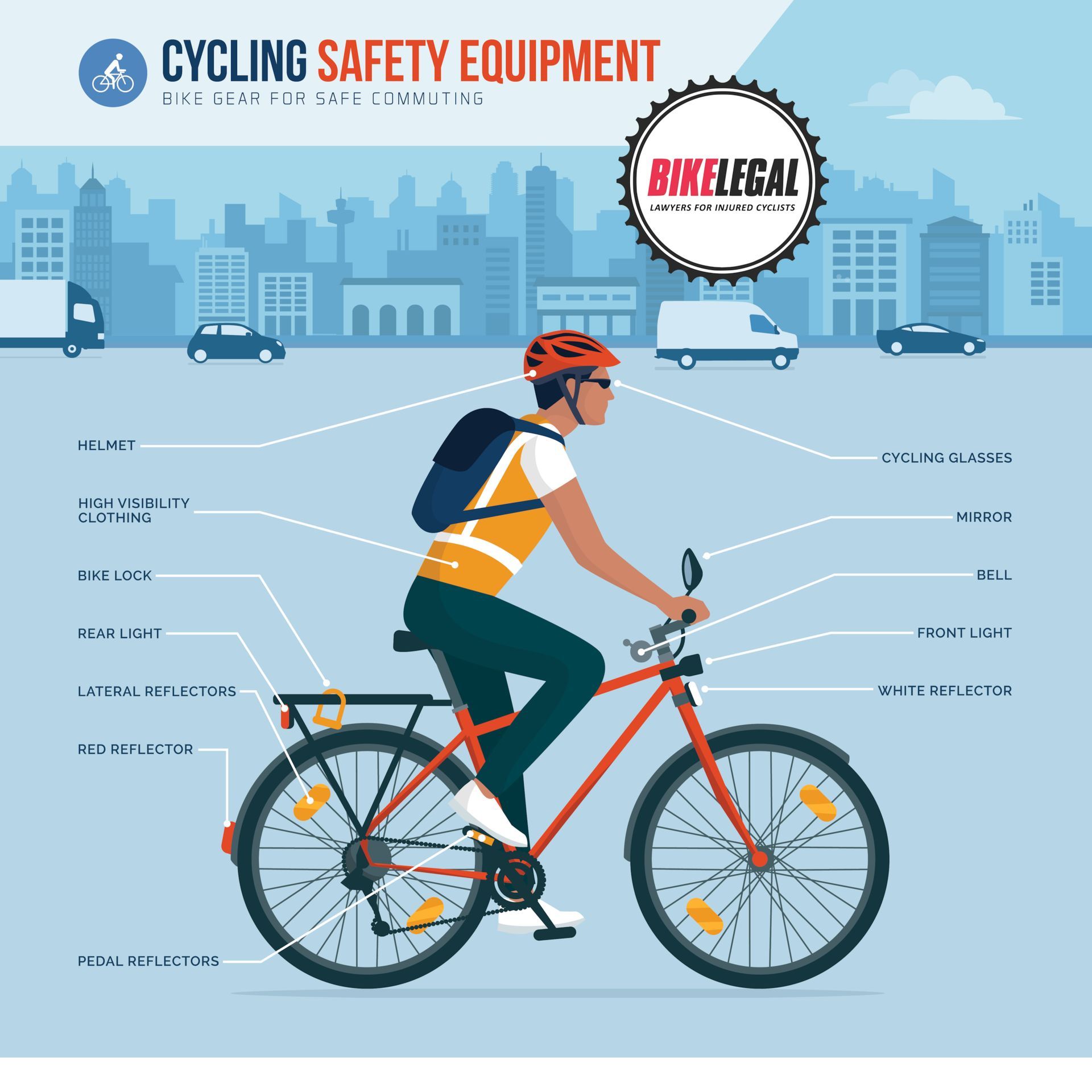
Nevada's approach to bicycle safety encompasses a combination of legal requirements and strongly recommended practices as part of strict Cycling Laws in the United States. These measures are designed to protect cyclists, minimize accidents, and ensure that both cyclists and motorists can share the road safely and effectively:
Required Equipment
As per NRS 484B.783, you must install certain equipment in your bicycle before embarking on a ride in Nevada:
- Lights & reflectors for night riding in Nevada:
Every bicycle used during nighttime or poor visibility conditions must have the following
- Front lamp: The bicycle must have a front lamp that emits white light, which can be seen from a minimum distance of 500 feet.
- Red reflector or Rear Red Light: A red reflector must be affixed to the back of the bicycle that's visible from a distance of at least 50 to 300 feet when caught in a vehicle's headlights. In lieu of a reflector, a rear tail light may be used that is visible from 500 feet.
- Reflective material or Light: Reflective material that is visible from 600 feet when illuminated by a vehicle's low-beam headlights must be attached to both sides of the bicycle. Alternatively, a light that is visible from 500 feet may used.
- Braking system requirements:
A fully operational braking system is a legal requirement for bicycles in Nevada. This system must enable the bicycle to come to a complete and safe stop within a reasonable distance.
Pro Tip- Optimal light set-up for night riding:
- Front Light: Choose a white, front-facing light. A solid beam is ideal for clearly illuminating the road and spotting any upcoming hazards. The brightness should range between 250 and 2,000 lumens, with 1,000 lumens recommended to ensure adequate visibility.
- Rear Light: Your rear light should be red and preferably pulsing to catch the attention of drivers behind you. It is recommended to use a rear tail light during the day as well to increase your visibility. 250 lumens are sufficient.
To learn about lumens for bicycle lights, read our guide, How Bright Should Your Lights Be?
Bicycle Helmet Laws in Nevada
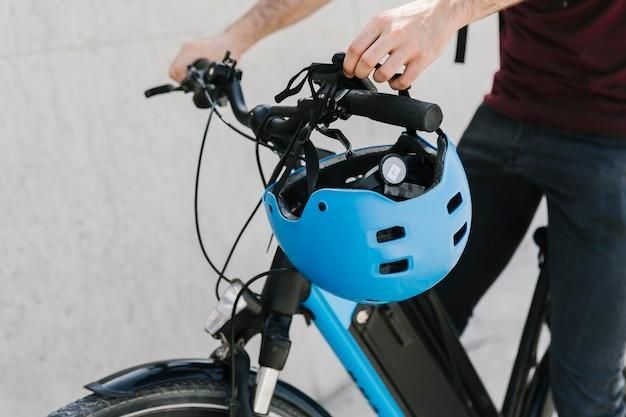
Nevada does not have a statewide helmet law for bicyclists of any age. However, safety experts and the Nevada Department of Transportation strongly recommend helmets.
- For e-bikes, helmets are required for riders under 18 on Class 3 e-bikes, but not for Class 1 or 2.
- Some local jurisdictions may also require helmets for minors, so it’s important to check city or county rules.
Even when not required by law, wearing a helmet is one of the best ways to prevent serious injury. Learn more in The Truth About Your Cycling Helmet and understand the risks of bike accidents without helmets.
Visible Clothing
While not required by law, cyclists are encouraged to wear highly visible clothing, particularly when riding in low-light conditions or at night. Bright colors and reflective materials help make cyclists more noticeable to motorists, thereby decreasing the risk of accidents.
Proposed Bicycle Law Updates for 2025
Assembly Bill 168 – Proposed "Stop as Yield" Rule for Bicycles, E-Bikes, and Scooters
Introduced by Assemblymember Goulding in 2025, Assembly Bill 168 proposes an update to Nevada law that would allow people riding bicycles, electric bicycles, or electric scooters to treat stop signs and red lights as yield signs under specific, safe conditions.
Under this bill:
- Cyclists may proceed through a stop sign without stopping if:
- They slow down, determine it's safe,
- The intersection is clear,
- And they yield to pedestrians and vehicles that pose an immediate hazard.
- Riders may proceed through a red light or make a turn after first stopping if:
- It’s safe to enter the intersection,
- They yield to other traffic and pedestrians,
- Left turns on red are only allowed onto one-way streets.
The proposed change applies to bicycles, e-bikes, and scooters and aims to improve safety and efficiency for cyclists navigating intersections.
Violations of this law would be considered a civil infraction.
Why It Matters
Advocates like the Nevada Bicycle Coalition support the bill, citing evidence from other states:
- Idaho saw a 14% reduction in cyclist injuries after adopting similar laws.
- Delaware saw a 23% drop in the first year after enacting a "stop-as-yield" rule.
AB168 remains in committee as of now. Cyclists must continue following the current law requiring full stops until any updates are officially enacted.
Track the bill here:
Nevada Legislature - AB168 Overview
Nevada's E-Bikes Regulations
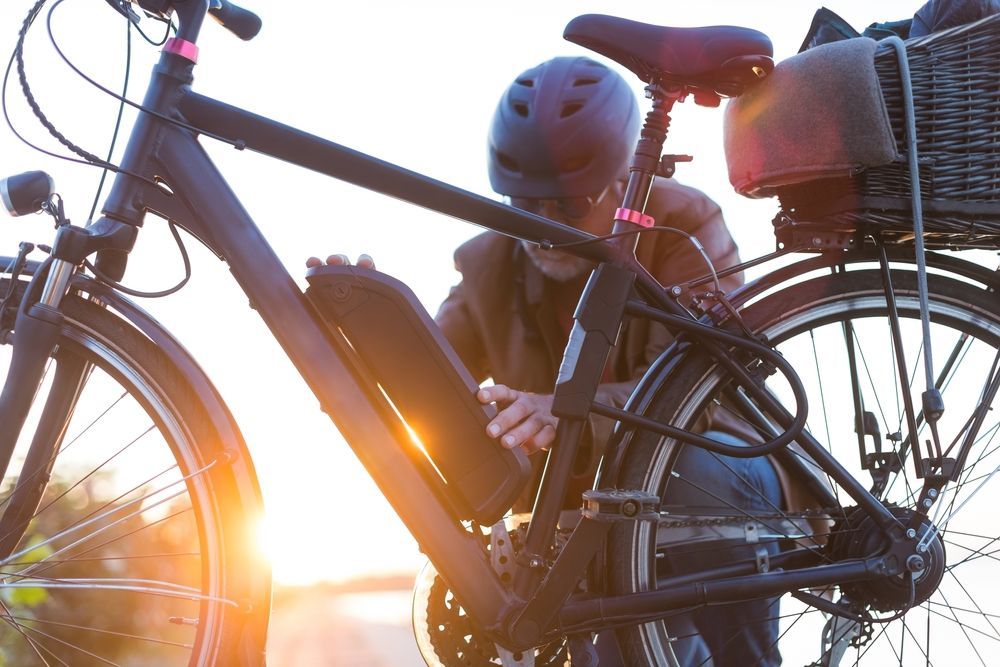
For a deeper look at Nevada e-bike laws, visit our full guide: Nevada E-Bike Laws and Legislation – Complete 2025 Overview
Quick Overview
Nevada treats electric bicycles similarly to traditional bicycles, meaning no license, registration, or insurance is required. However, e-bikes are not the same as mopeds or scooters and are subject to unique regulations under NRS 484B.017 and SB 383 (2021).
What Is an E-Bike?
An electric bicycle is defined under NRS 484B.017 as a two- or three-wheeled device with:
- Fully operable pedals,
- A seat or saddle,
- An electric motor
not exceeding 750 watts, and
- A design that meets one of three specific classifications.
Learn more in our article
Everything You Need to Know About E-bikes
E-Bike Classifications:
- Class 1: Pedal-assist only, up to 20 mph
- Class 2: Throttle-powered, up to 20 mph
- Class 3: Pedal-assist only, up to 28 mph (must include a speedometer)
Where You Can Ride:
- All classes can use public streets, highways, bike lanes, and shared-use paths unless locally restricted
- BLM and US Forest Service lands may have trail access limitations depending on local rules
Equipment Requirements:
- Permanent classification label required
- Must meet federal safety standards
- The motor must cut off when pedaling stops or brakes are applied
- Modifications that alter speed/class require an updated label
Age and Helmet Rules:
- Class 3 riders must be at least 16 years old
- Helmets are required for Class 3 riders under 18
- Helmets are strongly recommended for all e-bike users
Other Protections:
- Landowners allowing e-bike use on recreational property are shielded from liability (per SB 383)
- It is illegal to damage or throw objects at an e-bike, with legal protections equal to those for cars and bicycles
For full details, trail access exceptions, and recent legislation, read the full article: Nevada E-Bike Laws and Legislation.
Legal Implications of Violating Nevada Bicycle Laws
In Nevada, the laws governing the use and operation of bicycles are designed to ensure the safety of cyclists, pedestrians, and motorists alike. Violations of these laws can lead to various penalties, fines, and legal consequences:
1. Penalties and fines for violations of bicycle laws
The specific penalties can vary depending on the nature of the violation and the jurisdiction within which the offense occurs.
- Cycling under the influence (CUI) misdemeanor consequences: For instance, if you are caught cycling under the influence of alcohol or toxic substances, you will face charges of reckless endangerment. This act is generally considered a gross misdemeanor and carries a penalty of:
- A fine of up to $2,000 and/or
- A jail term of up to 364 days
- CUI resulting in injury consequences: However, if the cycling under the influence (CUI) incident results in someone suffering significant bodily injury (defined under NRS 0.060), the charge escalates to a category C felony. The punishment for this elevated charge includes:
- A prison sentence ranging from one to five years in the Nevada State Prison and
- A possible fine of up to $10,000, at the discretion of the court
2. Legal consequences of accidents involving cyclists
When an accident involves a cyclist, the legal consequences can be significant, particularly if the cyclist or another party is injured or if there is substantial property damage. The nature of these consequences can vary depending on the specifics of the incident, including who was at fault and the severity of the injuries or damage.
Here’s a quick breakdown of what you need to know in this regard:
- Liability and compensation:
- Motorist fault: In accidents where a motorist is found to be at fault, the cyclist may be entitled to compensation for losses incurred. This can include medical expenses, repair or replacement of the bicycle, and even compensation for pain and suffering.
- Cyclist fault: Conversely, if a cyclist is found to have contributed to an accident through a violation of traffic laws, they may be held partially liable. Under Nevada's revised comparative negligence statutes, individuals can still recover a percentage of the incurred damages.
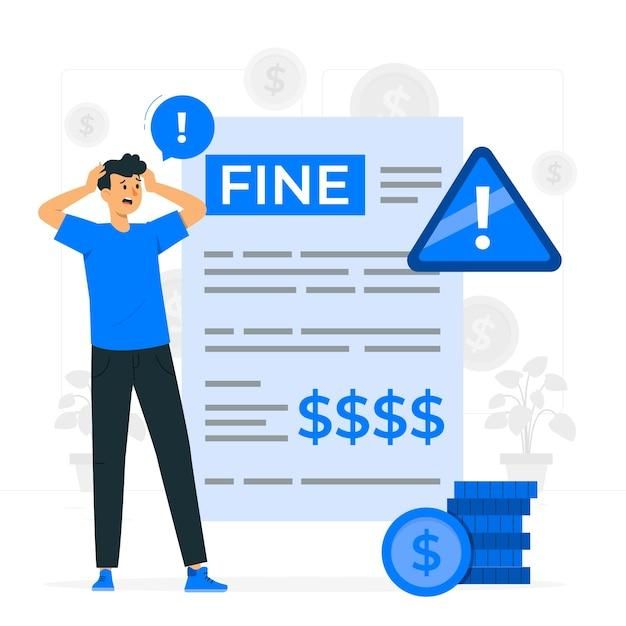
What to Do If You've Been Involved in a Cycling Accident in Nevada?
If you're involved in an unfortunate bicycle accident in Nevada, the following steps should be undertaken with utmost care:
- Call 911: Promptly contact emergency services by dialing 911 to ensure swift medical assistance and police intervention at the accident scene. Provide accurate details regarding the location and nature of the incident to expedite response times. Most importantly, don't forget to ask the police officer to generate a traffic collision report.
- Exchange Relevant Information: Exchange pertinent information with all parties involved in the accident, including drivers, witnesses, and law enforcement personnel. Obtain details such as names, contact information, insurance details, vehicle license plate numbers, and witness statements to facilitate subsequent legal proceedings.
- Preserve Key Evidence: Take proactive measures to preserve crucial evidence at the accident scene, including photographic documentation of the surroundings, vehicles, and any visible injuries sustained. Additionally, retain any relevant medical records, police reports, or correspondence related to the incident for future reference.
- Contact a Bicycle Accident Lawyer: Given the complex legal nuances surrounding cycling accidents, it is advisable to seek a cycling accident law firm. A skilled bike injury lawyer can provide invaluable guidance and advocate for your rights. Be sure to opt for a top-rated bicycle accident attorney.
Why You Need a Nevada Bicycle Accident Attorney?
Bicycling in Nevada offers scenic routes and healthy recreation, but it also comes with inherent risks, including the potential for accidents. When these accidents occur, it becomes paramount to have the guidance of a qualified Nevada bicycle accident attorney.
Let's explore why securing legal representation is crucial for individuals involved in bicycle accidents in Nevada:
- Legal Expertise: Navigating bicycle accident cases can be complex due to Nevada's laws and regulations. A specialized bicycle accident attorney possesses in-depth knowledge of these laws and can effectively represent your interests.
- Understanding Liability: Determining liability in bicycle accidents requires a nuanced understanding of Nevada's comparative negligence laws. A cycling attorney can assess the circumstances of your case to establish liability and pursue compensation accordingly.
- Maximizing Compensation: An experienced bike accident attorney can advocate for your rights and maximize the compensation you receive for medical expenses, lost wages, pain and suffering, and other damages.
- Legal Representation: When dealing with insurance companies or pursuing legal action, having a bike accident lawyer by your side can level the playing field. They can handle communication, paperwork, and negotiations on your behalf, allowing you to focus on recovery.
- Courtroom Advocacy: If your case goes to court, a knowledgeable attorney will provide strong advocacy on your behalf. They will present compelling arguments and evidence to support your claim and achieve a favorable outcome.
Wrapping it Up
Understanding Nevada's bicycle laws is critical for everyone's safety. From roadway positioning to e-bike classifications, these regulations are designed to protect cyclists and encourage responsible riding.
Now that you know the Nevada Bicycle Laws, see how many of these common cycling myths you’ve heard—and how they compare to the actual law.
Key Takeaways:
- Nevada cyclists must adhere to the same local bike laws as motorists.
- Prioritize safety by wearing helmets and reflective gear.
- Ride in the bicycle lane and respect traffic signals and signs.
- Use proper lighting and reflectors from dusk to dawn.
Ride Protected. Ride Safe with Bike Legal.
If you’ve been involved in a bicycle accident in Nevada, you need a team that understands the law. At Bike Legal, our attorneys specialize in representing injured cyclists across the state. We know what it takes to win cases involving negligent drivers, dangerous road conditions, and insurance disputes. Don't leave your recovery to chance.
Need a trusted bicycle accident attorney in Nevada? Contact Bike Legal today for a free consultation.
📞 Call 877-BIKE LEGAL (877-245-3534
